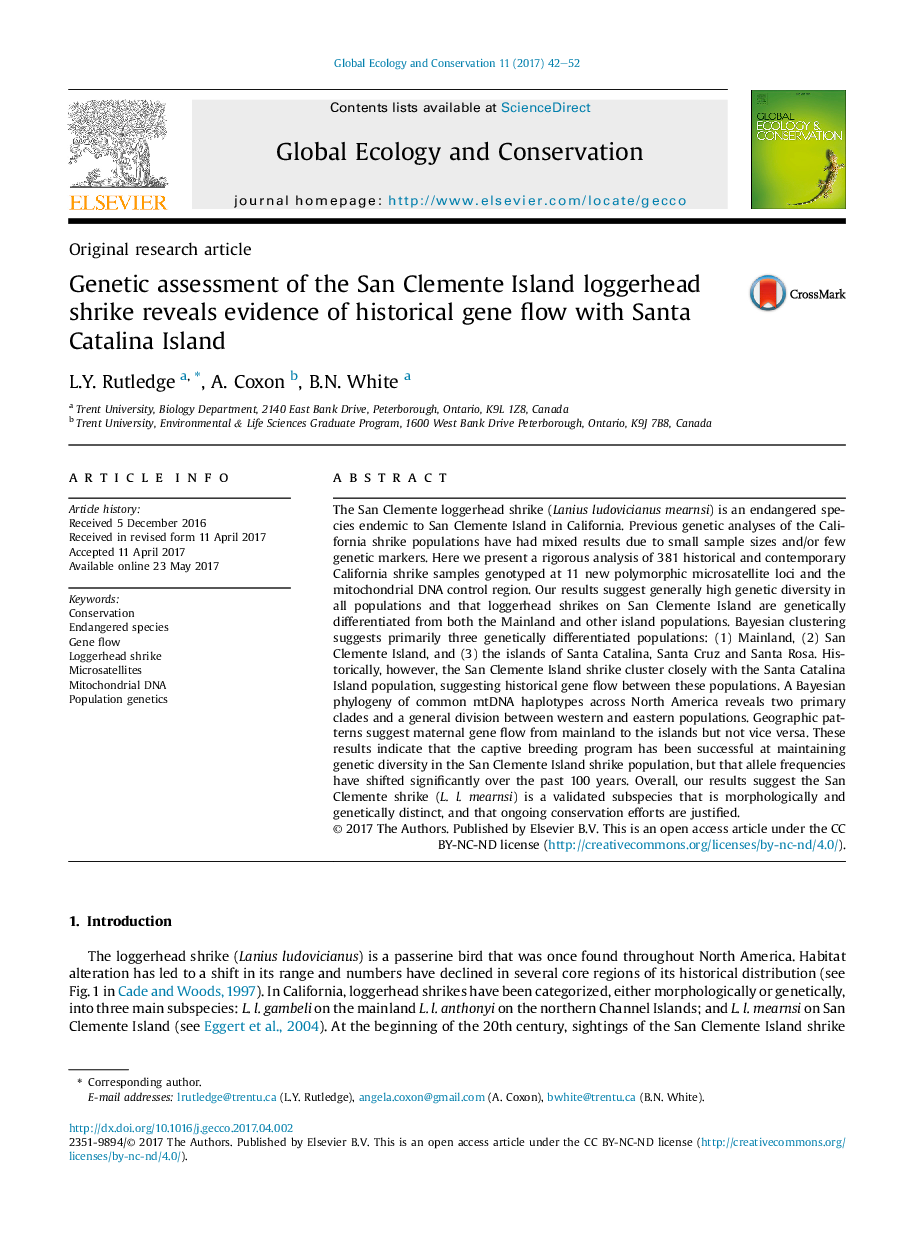| Article ID | Journal | Published Year | Pages | File Type |
|---|---|---|---|---|
| 5742398 | Global Ecology and Conservation | 2017 | 11 Pages |
The San Clemente loggerhead shrike (Lanius ludovicianus mearnsi) is an endangered species endemic to San Clemente Island in California. Previous genetic analyses of the California shrike populations have had mixed results due to small sample sizes and/or few genetic markers. Here we present a rigorous analysis of 381 historical and contemporary California shrike samples genotyped at 11 new polymorphic microsatellite loci and the mitochondrial DNA control region. Our results suggest generally high genetic diversity in all populations and that loggerhead shrikes on San Clemente Island are genetically differentiated from both the Mainland and other island populations. Bayesian clustering suggests primarily three genetically differentiated populations: (1) Mainland, (2) San Clemente Island, and (3) the islands of Santa Catalina, Santa Cruz and Santa Rosa. Historically, however, the San Clemente Island shrike cluster closely with the Santa Catalina Island population, suggesting historical gene flow between these populations. A Bayesian phylogeny of common mtDNA haplotypes across North America reveals two primary clades and a general division between western and eastern populations. Geographic patterns suggest maternal gene flow from mainland to the islands but not vice versa. These results indicate that the captive breeding program has been successful at maintaining genetic diversity in the San Clemente Island shrike population, but that allele frequencies have shifted significantly over the past 100Â years. Overall, our results suggest the San Clemente shrike (L. l. mearnsi) is a validated subspecies that is morphologically and genetically distinct, and that ongoing conservation efforts are justified.
